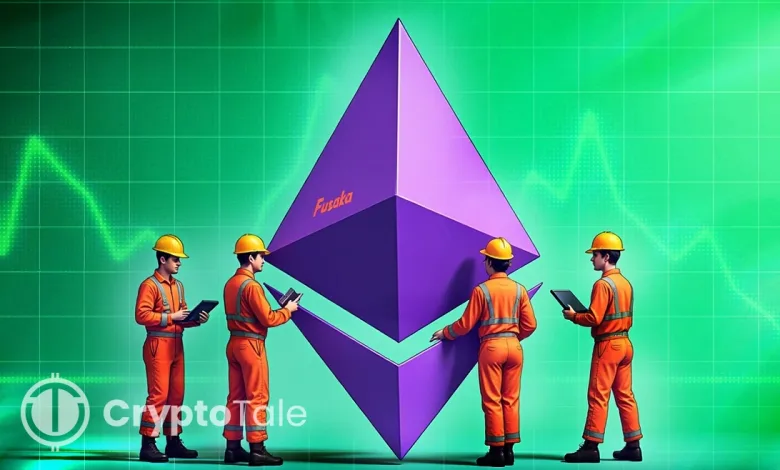Ethereum Developers Set December 3 for Fusaka Upgrade

- Ethereum confirms December 3 for its Fusaka upgrade after smooth final testnet runs.
- Fusaka adds PeerDAS and expands blob capacity to drive next-level Layer-2 scaling.
- The upgrade boosts Ethereum’s gas limit fivefold, enhancing efficiency and throughput.
Ethereum developers have locked in December 3 as the official date for the network’s next major upgrade, named Fusaka. The announcement came after the final testnet deployment cleared without issues, marking the last step before mainnet activation. Developers say the upgrade will pave the way for Ethereum’s next phase of scalability.
The upgrade follows months of developer testing across multiple testnets, including Holesky, Sepolia, and Hoodi. The successful runs gave researchers confidence to finalize the mainnet timeline. Ethereum Foundation researcher Alex Stokes described the milestone as a major achievement for the ecosystem.
“It’s a really big deal,” Stokes said, noting strong community excitement around the upgrade. Fusaka aims to increase data access, boost validator performance, and get Ethereum ready for widespread Layer-2 adoption.
PeerDAS Integration Anchors Scalability Goals
At the core of the Fusaka upgrade lies Peer Data Availability Sampling, or PeerDAS, a data-sharing innovation long anticipated by Ethereum developers. Without relying on centralized nodes, the feature enables validators to access and verify data more quickly. Developers see PeerDAS as the cornerstone of Ethereum’s upcoming scalability era.
PeerDAS was initially scheduled to launch with the Pectra upgrade, but was delayed to allow for extensive testing. It will now debut with Fusaka, reinforcing Ethereum’s push to handle higher network loads. Ethereum co-founder Vitalik Buterin previously called PeerDAS “the key to layer-2 scaling,” emphasizing its role in reducing transaction costs across the ecosystem.
Additionally, PeerDAS will supplement Ethereum’s previous “blob” innovation, which was unveiled in the 2024 Dencun upgrade. Blobs allowed temporary storage of Layer-2 transaction data, lowering gas fees and improving transaction speeds. Fusaka expands on this foundation by increasing blob capacity, which will enable Layer-2 networks to process more data at lower cost.
Developers expect the combined impact of PeerDAS and increased blob space to push Layer-2 transaction costs closer to zero. The change will make Ethereum more accessible to both developers and users. This aligns with the network’s long-term goal of serving as a global settlement layer.
Related: Ethereum Unveils ZK, RWA, and Restaking Enterprise Portal
Gas Limit Boost and Network Efficiency
Fusaka will also raise Ethereum’s block gas cap from 30 million to 150 million units. The goal of the fivefold rise is to increase network throughput and validator efficiency. By processing more transactions per block, Ethereum aims to lower congestion and keep costs low across Layer-2 networks and decentralized applications.
The upgrade introduces about a dozen Ethereum Improvement Proposals (EIPs), each targeting specific areas of performance, security, and scalability. Combined, they represent one of the most comprehensive updates since the Merge. In September, the Ethereum Foundation started a four-week audit competition. It offered rewards of up to $2 million to researchers who found bugs prior to the mainnet’s launch. The coordinated effort reflects Ethereum’s emphasis on security as it transitions toward high-volume Layer-2 activity.
The Fusaka rollout signals Ethereum’s strategic acceleration toward full post-Merge maturity. The upgrade prepares the network for anticipated widespread adoption by strengthening Layer-2 infrastructure and validator coordination.
Ethereum’s current consolidation around $3,830 reflects a cautious market mood ahead of the event. Analysts point out that major price increases have accompanied prior upgrades, such as Pectra. Developers, however, are still more concerned with long-term technical advancement than immediate market impact.




